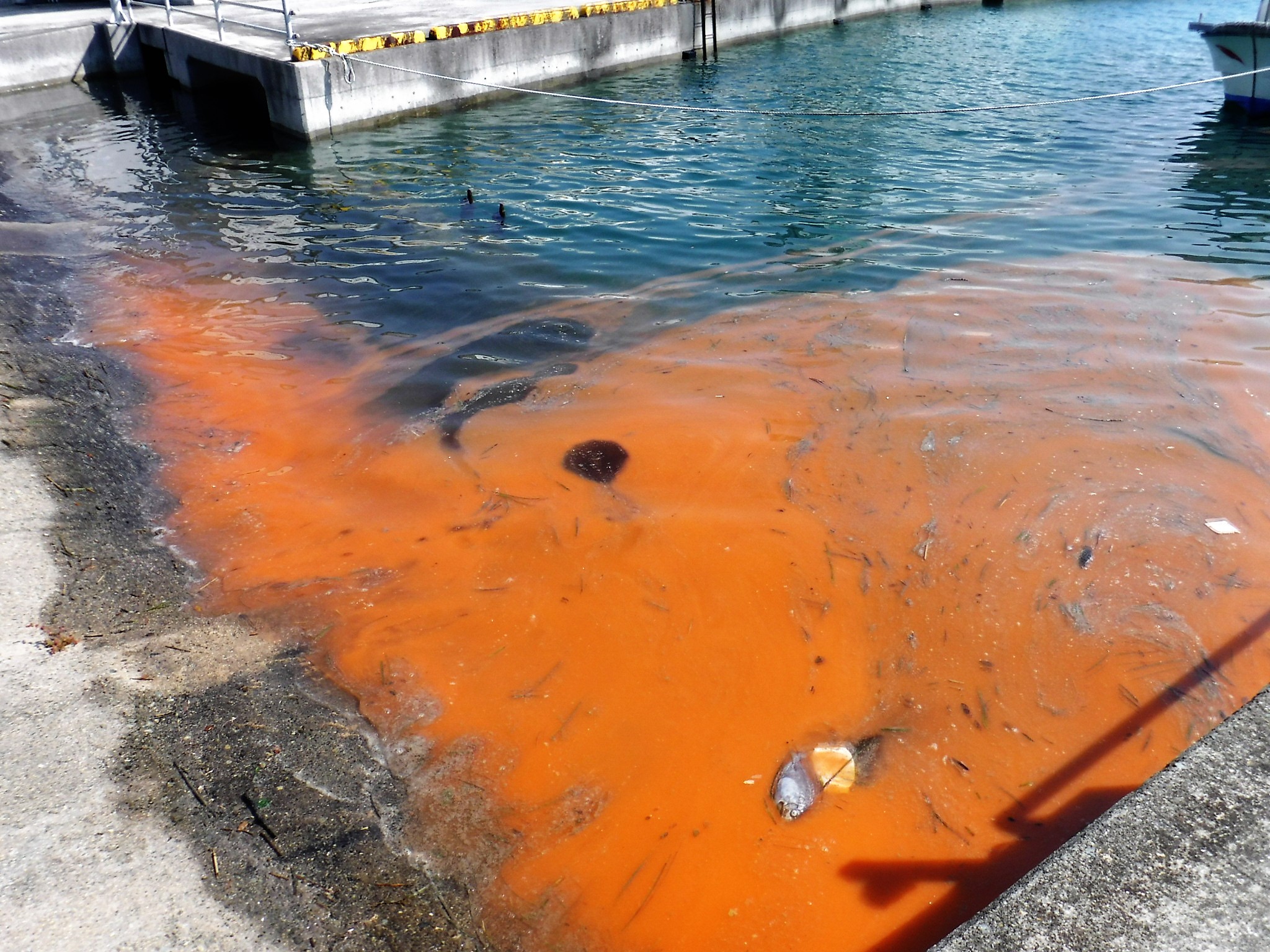 The Red Tide–a toxic algae bloom–has tormented Florida waters for months now. While making its way through the waters of western Florida, the Red Tide has left a wake of dead fish and sea life. Recently, high concentrations of the toxic algae have been detected in water samples taken at several local beaches in the Tampa Bay area. As the toxic blooms grow stronger, residents in nearby areas are starting the feel the effects. Many individuals with asthma and other allergies are suffering from the symptoms brought on by The Red Tide.
The Red Tide–a toxic algae bloom–has tormented Florida waters for months now. While making its way through the waters of western Florida, the Red Tide has left a wake of dead fish and sea life. Recently, high concentrations of the toxic algae have been detected in water samples taken at several local beaches in the Tampa Bay area. As the toxic blooms grow stronger, residents in nearby areas are starting the feel the effects. Many individuals with asthma and other allergies are suffering from the symptoms brought on by The Red Tide.
The Red Tide
The Red Tide, Karenia brevis, is a type of marine algae that produces harmful toxins and endangers the lives of sea creatures and even humans. While algae are essential to our ocean’s ecosystem, the Red Tide is quite deadly. Certain environmental factors contribute to the growth of the Red Tide, and recently, runoff is the biggest culprit. Algae can thrive by feeding off of pollutants like phosphorus and nitrogen that’s found in fertilizer from runoff or wastewater. These pollutant types allow K. brevis to grow rapidly and form large, reddish-brown blooms.
Additionally, the Red Tide releases a brevetoxin that can cause various problems if it’s ingested or inhaled. While it causes upper respiratory problems within humans, it kills an enormous amount of fish and sea life which significantly impacts our shorelines. These brevetoxins commonly gather and harbor in shellfish, and if ingested, can cause serious neurotoxic shellfish poisoning. Symptoms of neurotoxic shellfish poisoning include gastrointestinal complications and tingling sensations in the toes and fingers.
The Red Tide and Allergies
The brevetoxins from the blooms can aerosolize in the onshore breezes, triggering upper and lower respiratory problems within beach-goers. While it may not affect everyone, it certainly has a strong impact on those who already have asthma or other allergies. On average, these individuals will experience coughing, wheezing, chest tightness, itchy and burning eyes, throat irritation and congestion, and sneezing. Skin irritations–stinging, burning, rashes–have also been reported. Since the Red Tide can cause various skin irritations, it’s highly suggested that you stay out of the water until it’s officially cleared of the algae.
Unfortunately, the Red Tide blooms are growing more and more popular in our economy and lasting for much longer than previous years. Until precautions are taken to reduce this occurrence, we strongly recommend that individuals with pre-existing upper and lower respiratory conditions should be extra cautious.

